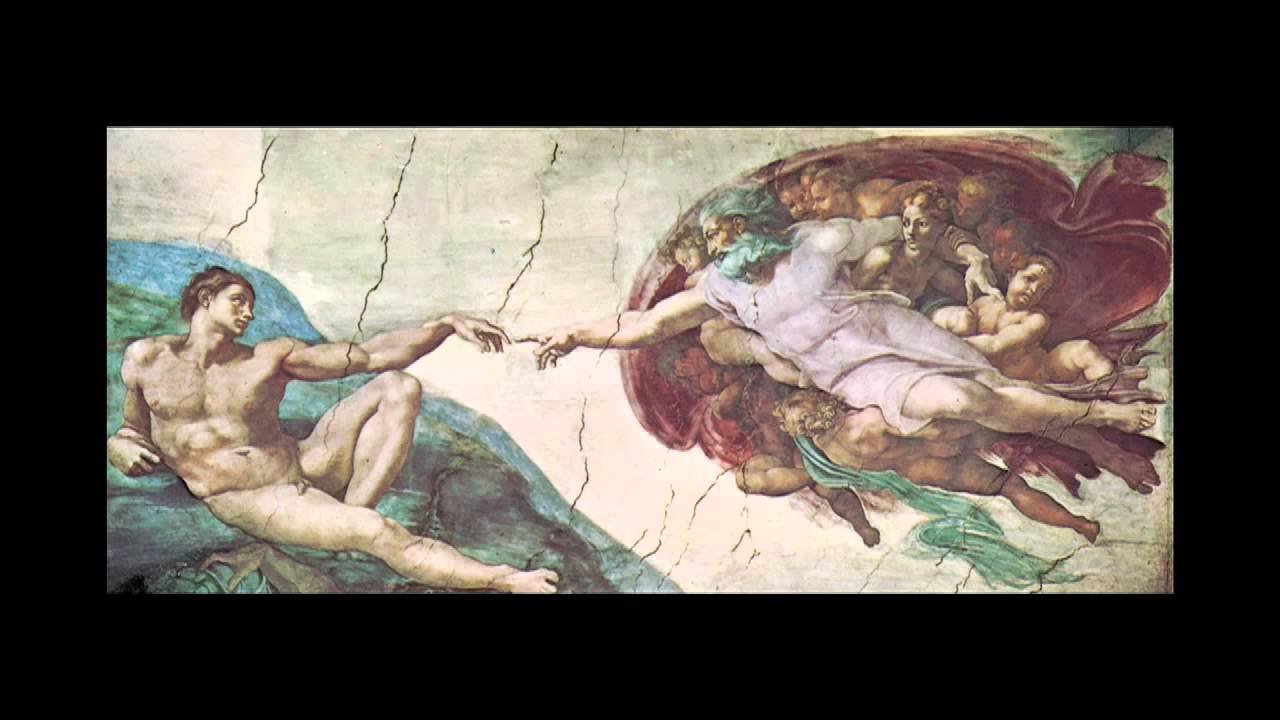
Robert Draws – The Creation of Adam, painted by Michelangelo between 1511 and 1512, is one of the most famous frescoes on the ceiling of the Sistine Chapel. This monumental work showcases a dramatic moment in biblical history: God giving life to Adam. It is celebrated not only for its profound religious significance but also for its artistic brilliance. The fresco’s composition, anatomy, and use of color continue to captivate audiences to this day. It is often regarded as a symbol of the divine connection between man and God.
The Creation of Adam shows the moment when God reaches out to touch Adam, initiating the first human life. Adam reclines on the ground, seemingly lifeless, while God floats above, extending His finger to impart the spark of life. The contrast between the two figures is striking. God appears dynamic, full of energy and motion, while Adam remains passive, lying still. This scene is rich with symbolism, clearly depicting the divine touch that gives life to humanity.
Michelangelo’s composition amplifies the drama of the moment. God, surrounded by angels, reaches out with outstretched arms and fingers toward Adam. Adam extends his hand in response, yet his finger seems just short of touching God’s. The tension in the scene builds, suggesting that the creation of life is imminent, but not yet realized. This simple yet powerful gesture highlights the profound connection between the divine and human. Furthermore, the almost-touching fingers enhance the suspense, emphasizing the closeness of God and humanity.
Michelangelo’s technique in The Creation of Adam is exceptional and reflects his mastery of human anatomy. The figures are rendered with remarkable accuracy and fluidity. God’s figure is muscular and robust, conveying power and vitality, while Adam’s body is more relaxed, emphasizing his dependence on the divine. The two figures are carefully positioned, allowing the viewer to feel the imminent contact between them. The detailed depiction of their hands is central to the composition, drawing the eye to the pivotal moment in the fresco.
The use of color also adds depth to the scene. Michelangelo applied rich hues, with God draped in vibrant, flowing robes, contrasted against Adam’s more muted, earthy tones. This color contrast reinforces the idea of the divine and the mortal, showing the relationship between heaven and earth. The light that seems to emanate from God’s finger further accentuates the supernatural energy that flows from the divine to the human.
“Read about: Whistler’s Mother: The Story Behind the Masterpiece”
The Creation of Adam is rich in symbolism, most notably the idea of God’s breath giving life to man. In religious terms, this moment represents the divine spark that imbues humanity with life and consciousness. The scene emphasizes the belief that human life originates from God and is sustained by His will. God’s hand reaching out to Adam symbolizes the direct connection between Creator and creation.
Moreover, the positioning of the two figures suggests a sense of unity. Though Adam lies on the earth, he physically reaches for God, implying that mankind’s ultimate purpose is to return to the divine. This idea of communion between man and God is central to Christian theology and is beautifully conveyed through Michelangelo’s composition. Consequently, the positioning highlights the profound connection and mutual dependence between the two. Thus, the scene conveys both spiritual unity and divine purpose.
The Creation of Adam has had a profound influence on art and culture. It is often reproduced in various forms, from paintings to sculptures, to tattoos. The iconic image of God’s and Adam’s hands almost touching has become one of the most recognized and reproduced symbols in art history. The fresco not only captures the biblical story but also explores themes of human potential and divine grace.
The fresco’s influence extends beyond the art world. It has been referenced in literature, philosophy, and popular culture. Its message of the divine spark of life resonates with many, regardless of religious background. The Creation of Adam speaks to the universal theme of human origins and our connection to a higher power.
Michelangelo’s work on the Sistine Chapel ceiling is widely regarded as one of the greatest artistic achievements of all time. The Creation of Adam is arguably the most iconic fresco on the ceiling, standing out for both its artistic and theological significance. The Sistine Chapel itself has become a symbol of Renaissance art and human achievement, representing the pinnacle of artistic expression during this period.
Michelangelo’s legacy endures through this masterpiece. His ability to combine artistic skill with profound theological meaning set a new standard for Western art. The Creation of Adam, in particular, continues to inspire study and admiration. Its influence is evident in countless works of art, and it continues to captivate those who seek to understand the essence of humanity’s relationship with the divine.
The Creation of Adam continues to captivate modern audiences, centuries after it was painted. Its powerful imagery and spiritual depth transcend time and place. Whether viewed in person at the Vatican or through reproductions in art books and online, the fresco maintains its ability to move viewers. The sense of anticipation and the moment of potential life captured in the painting invite contemplation and reflection.
Michelangelo’s skill in capturing human emotion and divine presence in this work speaks to his mastery as an artist. The Creation of Adam is not merely a depiction of a biblical scene, but a universal representation of life, creation, and connection.